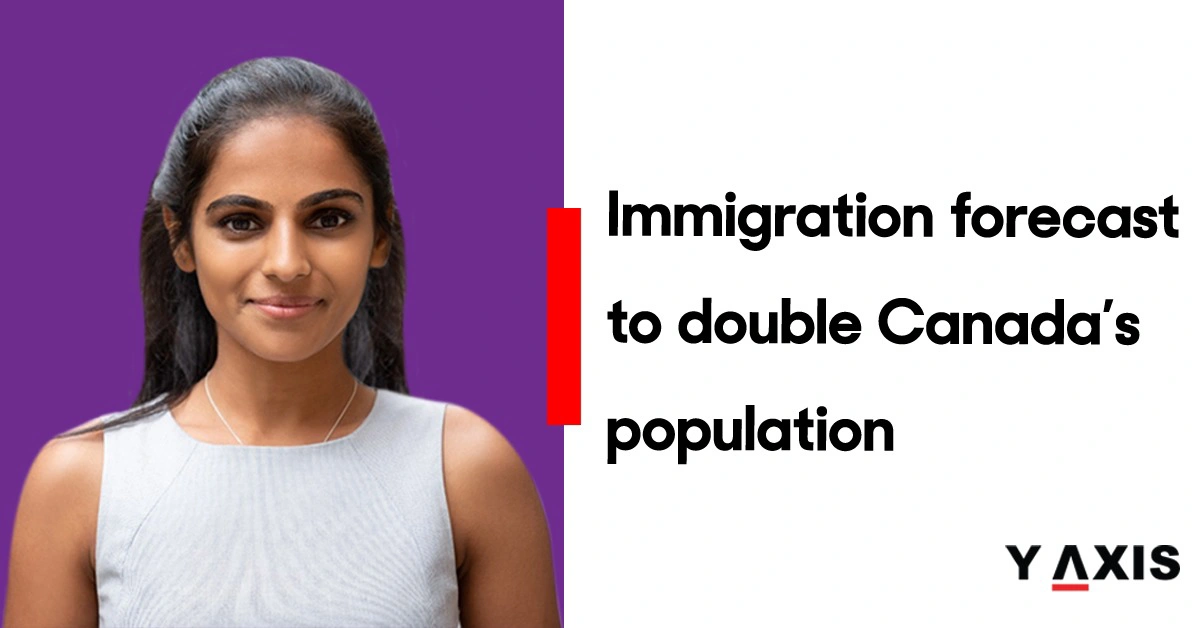Posted on August 29 2022
Immigration forecast to double Canada’s population
By , Editor
Updated September 26 2024
Key aspects about the Canadian immigration
- According to the Canadian immigration, the population of Canada is expected to double to a total of 74 million people, by the end of 2068
- Canada's population may reach between 42.9 million and 52.5 million by 2043
- Ottawa is set to invite 431,645 permanent residents in 2022
- Senior citizens with an age of 65 and older, will go from involving 18.5 percent of the population in 2021 to 23.1 percent in 2043 and 25.9 percent in 2068
*Know your eligibility to immigrate to Canada through Y-Axis Canada Immigration Points Calculator for free.
Overview:
Canada's population is said to reach 47.8 million people in 2043 and 56.5 million in 2068, in one medium-growth scenario, which would add 9.6 million people in Canada by 2043, or 457,143 per year steadily for the next 21 years, additionally, which is a rough figure of the current level of immigration to Canada.
Also read...
Canada has 1 Million job vacancies for over 90 days
Higher standard of Canadian immigration to address labor shortages
The impact of new National Occupational Classification on Canada’s Express Entry
Canadian Statistics
According to Statistics Canada, the population of Canada is expected to double to a total of 74 million people, by the end of 2068 due to a constant flow of immigrants from across the globe.
The statistical and demographic services agency reports that, from 38.2 million people in 2021, Canada's population may reach between 42.9 million and 52.5 million by 2043 and between 44.9 million and 74 million in 2068, as per the various projection scenarios.
Canada's population is said to reach 47.8 million people in 2043 and 56.5 million in 2068, in one medium-growth scenario, which would add 9.6 million people in Canada by 2043, or 457,143 per year steadily for the next 21 years, additionally, which is a rough figure of the current level of immigration to Canada.
Read more...
The new TR to PR permanent pathway to help Canada immigration
All you need to know about Canada immigration language tests
IRCC authorized new language test for Canada immigration
Immigration Levels Plan for 2022-2024
Ottawa is set to invite 431,645 permanent residents in 2022; 447,055 in 2023, and 451,000 in 2024, under its Immigration Levels Plan for 2022-2024.
Unless trends change significantly, Canada's population growth will not be coming from Canadian families having more children in the coming decades.
Natural growth is said to be reduced in the coming years, because of an aging population and the low fertility of Canadian couples. In 2020, the number of children each woman had, reached a record low level in the history of Canada at 1.4 percent, which continues to reduce in the coming years in a medium-growth scenario, even becoming negative in the brief period between 2049 and 2058.
Immigration is expected to be responsible for almost all of Canada's population growth in the coming decades.
Immigration key to Canada's population growth
Statistics Canada says, if the population of Canada continues to increase in the future, it will be primarily because of immigration, which is said to remain quite important and crucial in the coming decades, though at varying levels.
The federal agency acclaims the immigrants with an average age to Canada, where this strategy of addressing labor shortages will be eradicated from the country with an ongoing shortage of young individuals from its Population Projections for Canada, Provinces, and Territories, 2021 to 2068, 2022.
The Canadian Immigration is unable to increase the proportion of youth in the population, making Canada independent on high immigration levels to renew its population, specifically in the context of a low and recently declining fertility rate.
Read on...
Canadian Start-Up Visa approvals rise by 70% in 2022
IRCC decisions on immigration applications: Explained
5 success secrets for new immigrants in Canada
The population of Canada continues to age
Senior citizens with an age of 65 and older, will go from involving 18.5 percent of the population in 2021 to 23.1 percent in 2043 and 25.9 percent in 2068, in which, the medium-growth scenario expects the number of those aged 85 and older, going from 871,000 in 2021 to 3.2 million in 2068 in those years.
Canada could increase its population two times higher than every other G7 country from 2016 to 2021, with the help of immigration. While the pace of growth slowed in 2020 with the pandemic, it increased to the highest of all first quarters since 1990 in 2021, from January to March 2022.
Some individuals wish to see an increase in population to reduce the consequences caused by labor shortages, which may affect certain sectors of the Canadian economy. Meanwhile, the others manly focus on the impact it will have on infrastructure, particularly in the major cities of Canada, or on the availability of housing across the country.
*To get more updates, follow the Y-Axis blog page…
During the COVID-19 pandemic; Many individuals in Canada have migrated from one province to another which favored population growth in Prince Edward Island, Nova Scotia, New Brunswick, Quebec and British Columbia.
Do you want to migrate to Canada? Get guidance from Y-Axis, the leading Overseas Consultant in Australia.
If you found this article engaging, continue to read...
Canada with a record high of 1 million job vacancies in the first quarter of 2022
Canada switches NOC levels with TEER categories from Nov. 16, 2022
Tags:
Canada immigration
Migrate to Canada
Share

